There is nothing more exciting than having that first phone call or email from a potential client. Someone out there has heard what you offer and they want to seek your expertise. Now you have to seal the deal and make them want to sign a contract for you. Every virtual assistant has a slightly different way of doing business. Personally, once I have a short introductory conversation with my new potential client, I tell them I will follow up with a proposal. If you remember to include all of these elements in your next proposal, you will rock their socks off!
Make sure you get all the pertinent information you need from the client to really know how you can best help them. Use the proposal to show your understanding of their needs. Below is a breakdown of what a proposal should include:
- Introduction
 Every good virtual assistant should have a great proposal. This is your way of saying, “This is why I am amazing, and you should work with me.” Your first statement should be the hook; a statement introducing yourself and referring back to any previous conversations.
Every good virtual assistant should have a great proposal. This is your way of saying, “This is why I am amazing, and you should work with me.” Your first statement should be the hook; a statement introducing yourself and referring back to any previous conversations.
- Connect
Next you should connect with them by referencing something special about their company without making it too cheesy. Talk about something that excites you about what they offer and why you look forward to supporting their business.
- Body
 Now let’s get down to the fundamentals of the proposal. This is where you will outline exactly what they are going to receive in a way that makes it irresistible to them. As a virtual assistant a lot of what you are doing for them is taking their stress away. You are clearing their plate and giving them the confidence to hand this off to you, which is going to be the best thing for their business. This is the perfect opportunity for you to truly show them what you have that will benefit them and why they should choose you. Most businesses will look at several other virtual assistants, so you will want to be professional and confidant in your proposal. Make this part easy on them. Tell them exactly what they are going to get and let them see the benefit of it and what they can expect from you.
Now let’s get down to the fundamentals of the proposal. This is where you will outline exactly what they are going to receive in a way that makes it irresistible to them. As a virtual assistant a lot of what you are doing for them is taking their stress away. You are clearing their plate and giving them the confidence to hand this off to you, which is going to be the best thing for their business. This is the perfect opportunity for you to truly show them what you have that will benefit them and why they should choose you. Most businesses will look at several other virtual assistants, so you will want to be professional and confidant in your proposal. Make this part easy on them. Tell them exactly what they are going to get and let them see the benefit of it and what they can expect from you.
Make sure you clearly state your goals and why someone would want to work with you. Don’t forget the details that they want to know. You will want to include your hours, payment rates, terms and termination, and confidentiality.
- Sell Yourself
 This is a chance for you to describe what you and your business are about, stand for, offer, and can contribute. Make sure you weave in full information about your business so they get a great picture of you as well.
This is a chance for you to describe what you and your business are about, stand for, offer, and can contribute. Make sure you weave in full information about your business so they get a great picture of you as well.
Some people like to include bits of their portfolio. If you feel this is something you would like to do, make sure you sell your strengths to the client around the particular job. Learning how to highlight your most attractive abilities for the specific needs of an individual client is an invaluable skill.
- Upsell Your Package
Personally, I always like to think to the future. I will add an “upsell” plan in the proposal, showing my client a complimentary service I provide that matches the one they have asked about. I give them the price and ideas of what it would look like, saying that it would be a great add-on down the road. Who knows, maybe they will want to add it from the start!
- Conclusion
 Tie it all together. Create a sincere conclusion saying how excited you are that they have come to you and why you would be such a great fit. A good closing paragraph might look something like this: “I believe we are a good match and if you feel the same, let’s move on to the next steps.”
Tie it all together. Create a sincere conclusion saying how excited you are that they have come to you and why you would be such a great fit. A good closing paragraph might look something like this: “I believe we are a good match and if you feel the same, let’s move on to the next steps.”
Obviously make sure this is the best representation of yourself. Use a visually appealing structured layout. First impression is everything: your proposal should be pleasing, crisp, and well-organized.
Make sure you send any relevant welcome information you have along with your proposal.
Most important, make sure you are being true to yourself and the type of business you want to create. What makes your proposal different from every other freelancer or virtual assistant? You need to make yours standout in a professional but charismatic way. Don’t take a client that is not a good match for you. And remember, you are the boss now.
If you’re ready to create a great proposal for new clients, but could use some guidance, we’re here for you! We can assist with any aspect of business building and strategy. Simply shoot us an email or give us a call today.



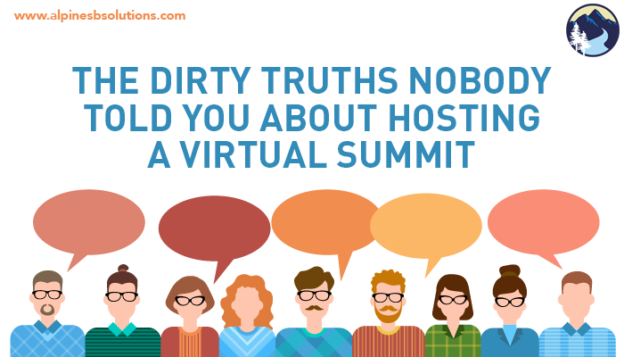
 This seems like a no-brainer but as a small business owner, it’s easy to put the equipment aside, forget about it and worry about all the other things on your to-do list. Then when push comes to shove, you set up last minute only to find out– %$#@! Technical difficulties! Please get your video, microphone, and programs all set-up well in advance and practice using them with friends and coworkers! That way if you come across any issues you can call over your techie friends to help you set it up and you’ll know how everything works before the big day comes. It is best to make sure you are super confident in the
This seems like a no-brainer but as a small business owner, it’s easy to put the equipment aside, forget about it and worry about all the other things on your to-do list. Then when push comes to shove, you set up last minute only to find out– %$#@! Technical difficulties! Please get your video, microphone, and programs all set-up well in advance and practice using them with friends and coworkers! That way if you come across any issues you can call over your techie friends to help you set it up and you’ll know how everything works before the big day comes. It is best to make sure you are super confident in the  Let’s face it, you’re not a jack of all trades, and you are definitely not a designer! Designing and digital marketing are really in-depth processes, and when they are done right, it is very successful! Leave this to the pros to help
Let’s face it, you’re not a jack of all trades, and you are definitely not a designer! Designing and digital marketing are really in-depth processes, and when they are done right, it is very successful! Leave this to the pros to help  Different States, Countries, and Time zones – Oh my! The number of guests you will be interviewing during your summit may be shocking. Four to Five speakers will not suffice. Expect to be interviewing around 25-30 people in your industry. Trying to
Different States, Countries, and Time zones – Oh my! The number of guests you will be interviewing during your summit may be shocking. Four to Five speakers will not suffice. Expect to be interviewing around 25-30 people in your industry. Trying to 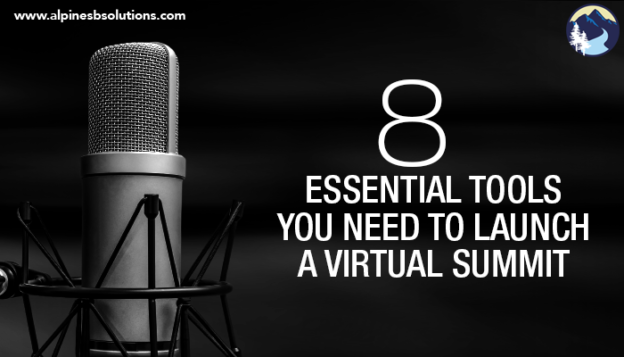
 Unlike podcasts, a virtual summit requires a webcam. High quality helps to engage and keep your viewers interested. While most laptops, desktops and phones do have a webcam built in, they are usually not the best quality. Some smart phones do have a great camera, but lack in microphone quality. Besides, it’s much easier to manage broadcasting when you have a set-up at your computer station. Trying to do it all mobile proves to be a challenge.
Unlike podcasts, a virtual summit requires a webcam. High quality helps to engage and keep your viewers interested. While most laptops, desktops and phones do have a webcam built in, they are usually not the best quality. Some smart phones do have a great camera, but lack in microphone quality. Besides, it’s much easier to manage broadcasting when you have a set-up at your computer station. Trying to do it all mobile proves to be a challenge. Webcams almost always come with a built-in microphone, but again the quality will never be as good than if you invest in a separate USB microphone. A microphone is just as important as your video; what good is a virtual summit if nobody can understand a word you are saying? You do not need to dive into professional recording equipment for this. Just look for a microphone that is recommended for podcasts and gaming with noise cancellation.
Webcams almost always come with a built-in microphone, but again the quality will never be as good than if you invest in a separate USB microphone. A microphone is just as important as your video; what good is a virtual summit if nobody can understand a word you are saying? You do not need to dive into professional recording equipment for this. Just look for a microphone that is recommended for podcasts and gaming with noise cancellation. It doesn’t matter what video editing software you use. It is up to you to use whatever tool you feel most comfortable working in. There are complex video editing software costs hundreds of dollars, but there are many free options as well. If you have a Mac computer your computer already comes with
It doesn’t matter what video editing software you use. It is up to you to use whatever tool you feel most comfortable working in. There are complex video editing software costs hundreds of dollars, but there are many free options as well. If you have a Mac computer your computer already comes with You might have to get creative in how you sell your all-access pass because your customers will need a way to log-in to the membership site. An example could include adding these customers to a separate mailing list and giving them a log-in and password to the membership site. This same mailing list could be used to market a new product/service as mentioned in the last article.
You might have to get creative in how you sell your all-access pass because your customers will need a way to log-in to the membership site. An example could include adding these customers to a separate mailing list and giving them a log-in and password to the membership site. This same mailing list could be used to market a new product/service as mentioned in the last article.
 An all-access pass is to your virtual summit as Netflix is to tv shows. This is the most popular way you can increase your revenue via virtual summits. Some people will not able to attend your virtual summit during your limited broadcasting event due to a busy schedule, sickness, or anything else life throws their way. However, these customers still crave the information!
An all-access pass is to your virtual summit as Netflix is to tv shows. This is the most popular way you can increase your revenue via virtual summits. Some people will not able to attend your virtual summit during your limited broadcasting event due to a busy schedule, sickness, or anything else life throws their way. However, these customers still crave the information! In essence, your virtual summit is an event. This is an amazing opportunity for companies to financially support you in exchange for publicity. There’s a few ways in which you can implement this, either by displaying their logo on your home page or making mention during your interviews.
In essence, your virtual summit is an event. This is an amazing opportunity for companies to financially support you in exchange for publicity. There’s a few ways in which you can implement this, either by displaying their logo on your home page or making mention during your interviews. After your summit is done broadcasting, you will have a shiny, new, email list of followers! They will be enthusiastic to learn more about your topic and seek more of the content you offer. This is absolutely a great opportunity to influence this email list and
After your summit is done broadcasting, you will have a shiny, new, email list of followers! They will be enthusiastic to learn more about your topic and seek more of the content you offer. This is absolutely a great opportunity to influence this email list and 
 It’s the paradox of the entrepreneur life. You hold autonomy over your schedule, but you should use that autonomy to set restrictions. Ask any successful entrepreneur and they will tell you a schedule is key (not convinced? Check out
It’s the paradox of the entrepreneur life. You hold autonomy over your schedule, but you should use that autonomy to set restrictions. Ask any successful entrepreneur and they will tell you a schedule is key (not convinced? Check out If you are lucky enough to have a storage area, pack it to the brim with discount supplies. If you haven’t already, make sure your supplies are organized and easily accessible.
If you are lucky enough to have a storage area, pack it to the brim with discount supplies. If you haven’t already, make sure your supplies are organized and easily accessible. Productivity hacks are great. They let you work smarter, not harder. Pick a few new productivity tricks to try out this school year. You can even pick a new trick each month to continually make yourself more effective.
Productivity hacks are great. They let you work smarter, not harder. Pick a few new productivity tricks to try out this school year. You can even pick a new trick each month to continually make yourself more effective.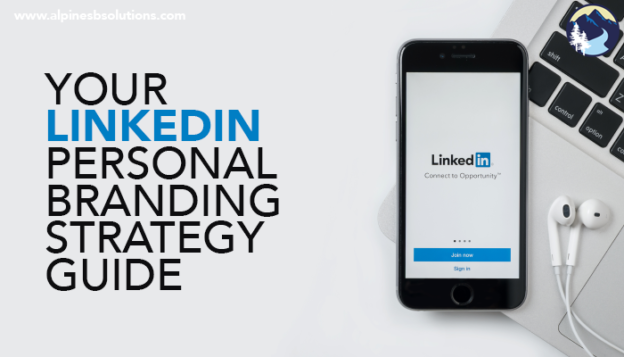
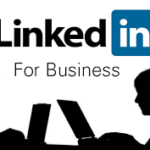 As an entrepreneur, you are already stretched pretty thin. I get it! The last thing you want is another item on your to-do list. Fortunately, this one really does only take a few minutes a day. If you need to, download the LinkedIn app on your phone so you can update it while waiting in line at the grocery store or during your commute.
As an entrepreneur, you are already stretched pretty thin. I get it! The last thing you want is another item on your to-do list. Fortunately, this one really does only take a few minutes a day. If you need to, download the LinkedIn app on your phone so you can update it while waiting in line at the grocery store or during your commute. At some point each week, make sure you are completing the following tasks.
At some point each week, make sure you are completing the following tasks. Each month, take the time to accomplish the following tasks.
Each month, take the time to accomplish the following tasks. Each quarter, take time to comb over your profile and make any necessary tweaks.
Each quarter, take time to comb over your profile and make any necessary tweaks.
 The cost per impression tends to be among the lowest for promotional products compared to other methods of advertising.
The cost per impression tends to be among the lowest for promotional products compared to other methods of advertising. For raising awareness among the target audience, promotional products lead to
For raising awareness among the target audience, promotional products lead to They say
They say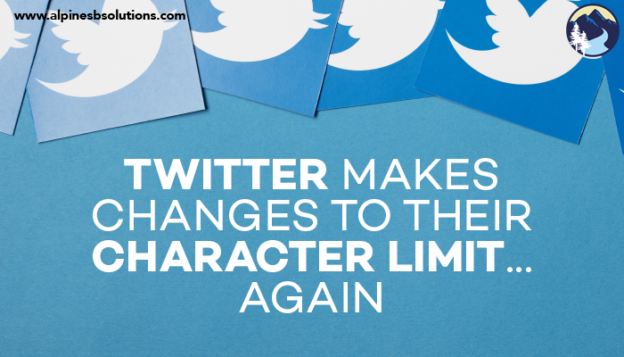
 Previously, a reply would involve a tweet beginning with “@username” and then the user’s message. The username character count went towards the 140-character limit. If a few users were involved in the conversation, the character total quickly got eaten up. It also made it difficult to actually see the message content since it was after a long string of usernames
Previously, a reply would involve a tweet beginning with “@username” and then the user’s message. The username character count went towards the 140-character limit. If a few users were involved in the conversation, the character total quickly got eaten up. It also made it difficult to actually see the message content since it was after a long string of usernames Twitter’s goal is to make conversations easier to follow, allowing users to focus on the discussion of the tweets and not the lists of those in the discussion.
Twitter’s goal is to make conversations easier to follow, allowing users to focus on the discussion of the tweets and not the lists of those in the discussion.  In the past few years,
In the past few years, 
 You can’t work as a
You can’t work as a  This insurance is added to a property insurance policy or is included in a package policy.
This insurance is added to a property insurance policy or is included in a package policy. Disability insurance is especially important for
Disability insurance is especially important for Fortunately, you have several options. If you’re married, check out your spouse’s policy. You can join the Freelancer Unions’ National Benefits Platform. You can go through a faith based health care sharing service. Check out your state’s
Fortunately, you have several options. If you’re married, check out your spouse’s policy. You can join the Freelancer Unions’ National Benefits Platform. You can go through a faith based health care sharing service. Check out your state’s 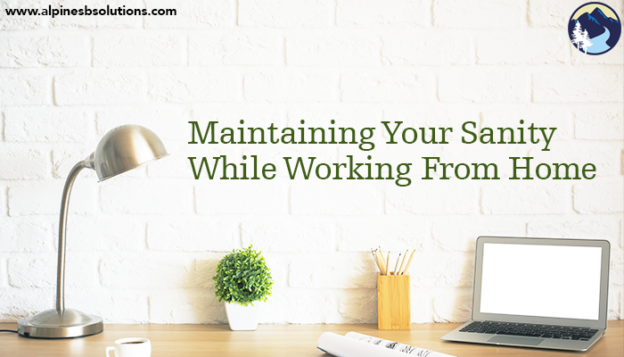
 What actually happens when we fail to structure our day isn’t the
What actually happens when we fail to structure our day isn’t the  Just like you need boundaries with your time, you need boundaries with your space. Find a place in your house that’s just for work. Ideally, it will be a separate room. But, if you don’t have the space for a full office, that’s okay. Maybe you can set a desk in your bedroom or the living room. What’s important is you have somewhere to go with minimal distractions.
Just like you need boundaries with your time, you need boundaries with your space. Find a place in your house that’s just for work. Ideally, it will be a separate room. But, if you don’t have the space for a full office, that’s okay. Maybe you can set a desk in your bedroom or the living room. What’s important is you have somewhere to go with minimal distractions. Sometimes, we get so into our flow we don’t realize we’ve been working for hours straight. The best way to fight stress and burnout is proactively, so it’s important to avoid this work grind. Schedule breaks into your day. Maybe it’s 10 minutes every hour with a half hour lunch break. Maybe it’s the Pomodoro method, where you work for 25 minutes and take a five-minute break. Play around with different strategies and find
Sometimes, we get so into our flow we don’t realize we’ve been working for hours straight. The best way to fight stress and burnout is proactively, so it’s important to avoid this work grind. Schedule breaks into your day. Maybe it’s 10 minutes every hour with a half hour lunch break. Maybe it’s the Pomodoro method, where you work for 25 minutes and take a five-minute break. Play around with different strategies and find  This isn’t about becoming one of those scary “don’t you dare interrupt me while I’m working” work witches.
This isn’t about becoming one of those scary “don’t you dare interrupt me while I’m working” work witches. Some people (very few mind you) can work in grunge clothes without it affecting their work. Good for them!
Some people (very few mind you) can work in grunge clothes without it affecting their work. Good for them!